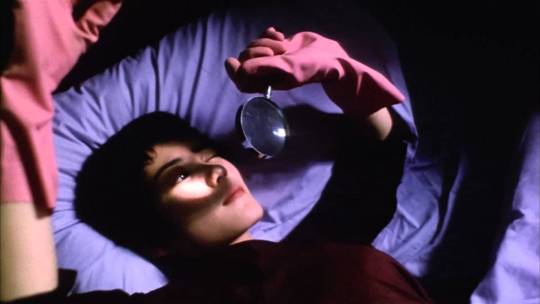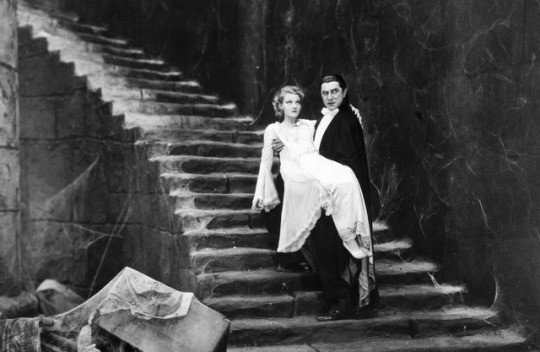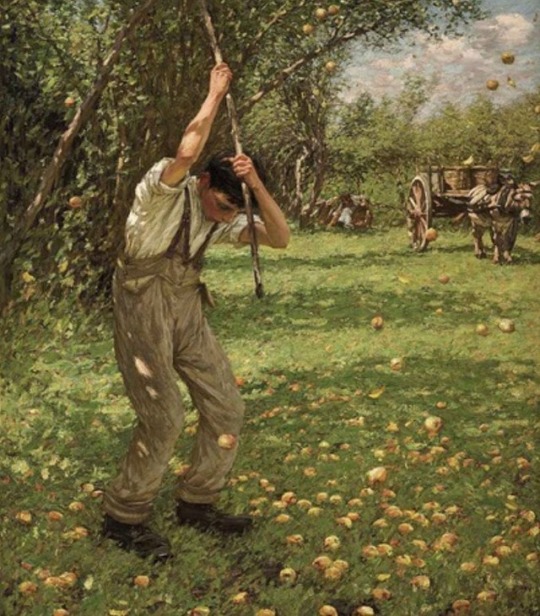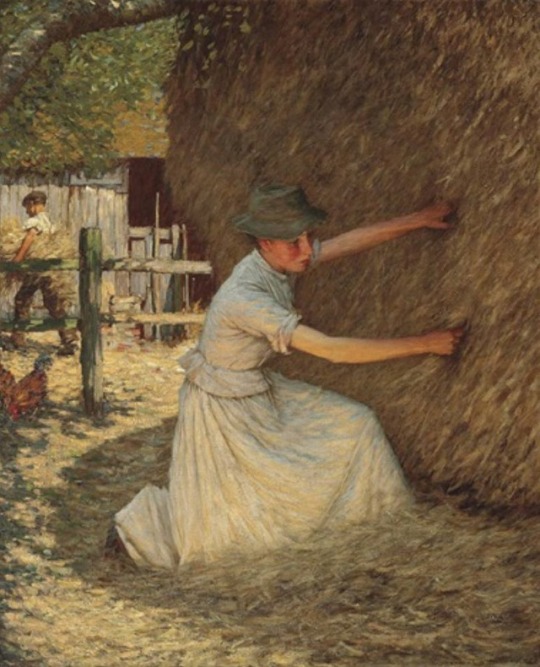#herbert melford
Text

Herbert Melford - Linda Vargas (Playboy 1957)
#herbert melford#linda vargas#playboy magazine#photography#vintage photography#vintage#retro#aesthetic#beauty#cheesecake#fifties#50s#50s model#1950s#playboy playmate#pinup#pin up#pinup model#my scan
2K notes
·
View notes
Photo

Myrna Loy and Ramon Novarro in The Barbarian (Sam Wood, 1933)
Cast: Ramon Novarro, Myrna Loy, Reginald Denny, Louise Closser Hale, C. Aubrey Smith, Edward Arnold, Blanche Friderici, Marcel Corday, Hedda Hopper, Leni Stengel. Screenplay: Anita Loos, Elmer Harris, based on a story by Edgar Selwyn. Cinematography: Harold Rosson. Art direction: Cedric Gibbons. Film editing: Tom Held. Music: Herbert Stothart.
Orientalist fiddle-faddle with Ramon Novarro as an Egyptian prince disguised as a translator and tour director wooing a wealthy American tourist played by Myrna Loy. Novarro is dashing and handsome, but not quite a match for Rudolph Valentino in The Sheik (George Melford, 1921), the classic film in this dubious genre. Loy is still emerging from her "exotic" phase, playing the sultry woman of the world -- she's supposedly half Egyptian on her mother's side.
4 notes
·
View notes
Text
December 2018 in Pictures

Cleopatra (1963/Joseph L. Mankiewicz)
The Night of the Generals (1967/Anatole Litvak)
Madam Satan (1930/Cecil B. DeMille)
The Man Who Had His Hair Cut Short (1966/André Delvaux)
® Ball of Fire (1941/Howard Hawks)
The Amazing Dr. Clitterhouse (1938/Anatole Litvak)
Artists and Models (1955/Frank Tashlin)
The Paleface (1948/Norman Z. McLeod)
The Exiles (1961/Kent MacKenzie)
Hi, Nellie! (1934/Mervyn LeRoy)
® M (1931/Fritz Lang)
Lost Horizon (1937/Frank Capra)
Deception (1946/Irving Rapper)
Utu (1984/Geoff Murphy)
The Working Man (1933/John G. Adolfi)
Monsieur Beaucaire (1946/George Marshall)
Child Bride (1938/Harry Revier)
Goodbye Solo (2008/Ramin Bahrani)
Call Me by Your Name (2017/Luca Guadagnino)
Cold War (2018/Paweł Pawlikowski)
Blackmail (1929/Alfred Hitchcock)
The Four Times (2010/Michelangelo Frammartino)
Scream (1996/Wes Craven)
Babes in Arms (1939/Busby Berkeley)
Hôtel Terminus (1988/Marcel Ophüls)
The Spider's Stratagem (1970/ Bernardo Bertolucci)
Dog Star Man (1964/Stan Brakhage)
Too Early/Too Late (1982/Jean-Marie Straub, Danièle Huillet)
Méditerranée (1963/Jean-Daniel Pollet, Volker Schlöndorff)
A Throw of Dice (1929/Franz Osten)
Judge Priest (1934/John Ford)
The Big Sky (1952/Howard Hawks)
Ceddo (1977/Ousmane Sembene)
2 or 3 Things I Know About Her (1967/Jean-Luc Godard)
Possibly in Michigan (1983/Cecelia Condit)
I Shot Jesse James (1949/Samuel Fuller)
Come Drink with Me (1966/King Hu)
Oklahoma! (1955/Fred Zinnemann)
Two Rode Together (1961/John Ford)
® Cape Fear (1962/J. Lee Thompson)
Dr. Ehrlich’s Magic Bullet (1940/William Dieterle)
The Five Venoms (1978/Chang Cheh)
Jeeves and Wooster: Season 1 (1990)
Attack the Gas Station! (1999/Kim Sang-jin)
Drums Along the Mohawk (1939/John Ford)
Caged (1950/John Cromwell)
Passport to Pimlico (1949/Henry Cornelius)
The Yearling (1946/Clarence Brown)
Juarez (1939/William Dieterle)
The Black Room (1982/Elly Kenner, Norman Thaddeus Vane)
A Very Long Engagement (2004/Jean-Pierre Jeunet)
Boomerang! (1947/ Elia Kazan)
Project A (1983/Jackie Chan, Sammo Hung)
Project A II (1987/Jackie Chan)
Broken Lance (1954/Edward Dmytryk)
Beyond the Forest (1949/King Vidor)
Strait-Jacket (1964/William Castle)
Laugh, Clown, Laugh (1928/Herbert Brenon)
He Who Gets Slapped (1924/ictor Sjöström)
Dracula Has Risen from the Grave (1968/Freddie Francis)
It Always Rains on Sunday (1947/Robert Hamer)
Garden of Evil (1954/Henry Hathaway)
Show Them No Mercy! (1935/George Marshall)
The Comancheros (1961/Michael Curtiz)
Scrooged (1988/Richard Donner)
I Died a Thousand Times (1955/Stuart Heisler)
The Crime of Monsieur Lange (1936/Jean Renoir)
Born Yesterday (1950/George Cukor)
Middlemarch (1994)
An Actor’s Revenge (1963/Kon Ichikawa)
® Nosferatu (1922/F.W. Murnau)
Drácula (1931/George Melford)
® Dracula (1931/Tod Browning)
Dracula’s Daughter (1936/Lambert Hillyer)
Son of Dracula (1943/Robert Siodmak)
The Bird with the Crystal Plumage (1970/Dario Argento)
Oktyabr (1928/Sergei M. Eisenstein)
® The Mummy (1932/Karl Freund)
The Mummy’s Hand (1940/Christy Cabanne)
The Mummy’s Tomb (1942/Harold Young)
The Mummy’s Ghost (1944/Reginald Le Borg)
The Mummy’s Curse (1944/Leslie Goodwins)
® The Wolf Man (1941/George Waggner)
® Frankenstein Meets the Wolf Man (1943/Roy William Neill)
® Frankenstein (1931/James Whale)
® The Bride of Frankenstein (1935/James Whale)
® Son of Frankenstein (1939/Rowland V. Lee)
The Ghost of Frankenstein (1942/Erle C. Kenton)
House of Frankenstein (1944/Erle C. Kenton)
Special Agent (1935/William Keighley)
Tuesday, After Christmas (2010/Radu Muntean)
Starting Out in the Evening (2007/Andrew Wagner)
Frozen River (2008/Courtney Hunt)
Everlasting Moments (2008/Jan Troell)
® To Be or Not to Be (1942/Ernst Lubitsch)
Lady Macbeth (2016/William Oldroyd)
® Chungking Express (1994/Wong Kar-wai)
Best experiences in bold, other recommended ones are linked. ® revisited.
2 notes
·
View notes
Text

Filmografía
1922 : The Prisoner of Zenda, de Rex Ingram
1923 : You Can't Get Away with It, de Rowland V. Lee
1923 : All the Brothers Were Valiant, de Irvin Willat
1923 : Can a Woman Love Twice ?, de James W. Horne
1923 : The Untameable, de Herbert Blaché
1923 : The Social Code, de Oscar Apfel
1923 : A Noise in Newboro, de Harry Beaumont
1924 : The Bedroom Window, de William C. de Mille
1924 : The House of Youth, de Ralph Ince
1924 : Idle Tongues, de Lambert Hillyer
1925 : The Happy Warrior, de James Stuart Blackton
1925 : Alias Mary Flynn, de Ralph Ince
1925 : Headlines, de Edward H. Griffith
1925 : The Circle, de Frank Borzage
1925 : Smouldering Fires, de Clarence Brown
1925 : Lady of the Night, de Monta Bell
1925 : Infatuation, de Irving Cummings
1925 : The Vanishing American, de George B. Seitz
1926 : It Must Be Love, de Alfred E. Green
1926 : Don Juan's Three Nights, de John Francis Dillon
1926 : Money to Burn, de Walter Lang
1926 : The Gay Deceiver, de John M. Stahl
1927 : The Price of Honor, de Edward H. Griffith
1927 : The Ladybird, de Walter Lang
1927 : Matinee Ladies, de Byron Haskin
1927 : A Million Bid, de Michael Curtiz
1927 : The Kid Sister, de Ralph Graves
1928 : Freedom of the Press, de George Melford
1928 : The Port of Missing Girls, de Irving Cummings
1928 : Tropical Nights, de Elmer Clifton
1929 : Girl on the Barge, de Edward Sloman
1930 : Murder Will Out, de Clarence G. Badger
1933 : The Whispering Shadow, de Colbert Clark y Albert Herman (serial)
1935 : Happiness C.O.D., de Charles Lamont
1935 : Mares de China, de Tay Garnett
1936 : I'll Name the Murderer, de Bernard B. Ray
1936 : Undersea Kingdom, de B. Reeves Eason y Joseph Kane (serial) .
#HONDURASQUEDATEENCASA
#ELCINELATELEYMICKYANDONIE
0 notes
Link
For just $3.99 When Thief meets Thief Released on March 5, 1937: A jewel thief cat burglar falls in love with one of the women that he robs after she catches him in the act and shoots him. Directed by: Raoul Walsh Written by: Gordon McDonnnell with screenplay by Harold French and John Meehan Jr. The Actors: Douglas Fairbanks Jr. Ricky Morgan, Valerie Hobson Glory Fane, Alan Hale Jim Diall, aka Colonel Fane, Edward Rigby Sander, Barbara Everest Mrs. Nolan, Jack Melford Thompson, Anthony Ireland Sir Timothy Haddon, Esme Percy Robinson, Basil Radford defending counsel Mr. Valentine, Leo Genn prosecuting counsel Mr. Peters, Ian Fleming coroner, Frank Birch Vicar, Roland Culver unknown, Fred Duprez unknown, Henry Longhurst unknown, Win Oughton unknown, Cecil Bevan unknown, Joan Connor unknown, Mary Kerridge unknown, Jim Burnett unknown, Hindle Edgar unknown, Herbert Cameron unknown, Dorothy Oldfield unknown, George Mozart unknown Runtime: 58m *** This item will be supplied on a quality disc and will be sent in a sleeve that is designed for posting CD's DVDs *** This item will be sent by 1st class post for quick delivery. Should you not receive your item within 12 working days of making payment, please contact us as it is unusual for any item to take this long to be delivered. Note: All my products are either my own work, licensed to me directly or supplied to me under a GPL/GNU License. No Trademarks, copyrights or rules have been violated by this item. This product complies withs rules on compilations, international media and downloadable media. All items are supplied on CD or DVD.
0 notes
Photo

Movie Odyssey Retrospective
Dracula (1931 English-language version)
The 1920s had been an ideal breeding ground for horror films in the West. As cinematic technology improved and daring directors unleashed their magic on nitrate film, audiences found themselves terrorized by titles like Nosferatu (1922, Germany), The Phantom of the Opera (1925), and The Unknown (1927). With the introduction of synchronized sound, it was only a matter of time before someone took the genre to the talkies. Tod Browning (frequent collaborator with Lon Chaney, Sr., including The Unknown) would be that director, and the first horror masterpiece after the silent era would be Dracula, based on the 1924 stage play Dracula (itself based on the classic Bram Stoker novel of the same name). Universal Studios – a major studio but not yet considered in the same class of Metro-Goldwyn-Mayer, Paramount, 20th Century Fox, and Warner Bros. at that time – had been considered specialists in horror and further burnished that reputation here. Hungarian-American Béla Lugosi became an overnight sensation, and since 1931 he has always been associated with black flowing capes, a badass accent, and blood-sucking.
Before a brief synopsis, it should be noted that there is a Spanish-language version of this film, Drácula, directed by George Melford and starring Carlos Villarías as the title character. That film, also released by Universal, came at a time when – during the early years of synchronized sound movies – studios frequently released non-English language versions of their movies (almost always European languages like French, German, Hungarian, Italian, Swedish; a burgeoning, but bankruptcy-prone market for films catering to the United States’ numerous ethnicities existed, too). Thought lost to time, Drácula resurfaced in the 1970s and has been restored for public consumption. A third version – a silent film – was released to theaters that had not updated their technology yet. As should be obvious, this write-up on Dracula will be on the English-language version with synchronized sound.
On Walpurgis Night somewhere in the Carpathian Mountains of Transylvania (present-day Romania), Englishman Renfield (Dwight Frye) is traveling by carriage to reach his client, Count Dracula’s (Lugosi) estate. Count Dracula has expressed his interest in an abbey outside of London. Villagers, warning of the spirit of Nosferatu, are fearful that the Count is a vampire, but Renfield dismisses those concerns. Renfield arrives at the castle, stunned at the immensity of the place and the appearance of a cloaked, slick-haired figure gracefully, slowly making his way down an immense, cobwebbed staircase. After bidding Renfield welcome, something can be heard howling outside.
“Listen to them. Children of the night. What music they make.”
Renfield becomes Dracula’s first victim and servant – groveling, maniacal, and violent – as the plot shifts to England and characters like Professor Van Helsing (Edward Van Sloan), sanitarium Dr. Seward (Herbert Bunston), his daughter Mina (Helen Chandler), Mina’s fiancée John Harker (David Manners), and Mina’s friend Lucy Weston (Frances Dade) begin investigating their newest acquaintance.
As the vampire Count Orlok in Nosferatu (itself an unauthorized version of Dracula), Max Schreck relied on his physical acting and makeup to frighten audiences. As Count Dracula in this film, Lugosi has a powerful weapon not afforded to Schreck: the sound of his voice. Born in 1882, Lugosi, having appeared in 1927 as Count Dracula in the stage play this movie is based on, arrived in the United States from Hungary in 1920. In that interim, Lugosi became fluent in English (this is disputed, but even if he had to learn his lines phonetically, the results were worth it) yet retained a thick Hungarian accent that prevented him from having a more prolific, diverse movie career. Nevertheless, in Dracula, his dialogue delivery – deliberate, deceptive, sometimes pausing for no apparent reason near the end of sentences – is incredible. Where Schreck’s Orlok angled for removing any semblance of humanity, Lugosi’s Dracula (which, on the basis of subsequent cultural references, has become the preferred prototype on which to create a vampiric character) is sophisticated, in touch with his humanity, all while retaining a threatening sexuality – “I never drink… wine,” he says. To put that in terms of a scenario, meeting Lugosi’s Dracula for dinner in any place outside of his castle might leave you charmed by the Count and just comfortable enough to eat and drink in his presence. That is, until Dracula feeds on you.
Universal did not see Lugosi as their first-choice Dracula; instead, that went to the senior Lon Chaney (1924′s He Who Gets Slapped, The Phantom of the Opera). Chaney died prior to production and, despite Universal’s preference for Paul Muni, relented when Lugosi lobbied relentlessly and said he was willing to accept an exiguous salary of $3,500 (~$56,000 in 2017′s USD). Lugosi declared bankruptcy the year after the film’s release. Having turned down the title role in Frankenstein (1931), Lugosi plodded through years of typecasting as suave horror villains and a British ban on horror films in the mid-1930s. He never became as established a movie star as fellow Universal Monsters star Boris Karloff, and played Count Dracula only twice – the second time in Abbott and Costello Meet Frankenstein (1948).
Alongside a bevy of forgettable performers, only one other actor stands out. That is Dwight Frye (who would also play Fritz in Frankenstein later that year) as the realtor-turned-slave Renfield. His performance, nowadays, might be dismissed as a relic of the worst of silent-era filmmaking that seems anachronistic even in 1931, but it works. Whether Frye swings into entertaining campiness or unmitigated insanity, he serves the film wonderfully. With eyes wide, veins pulsing from his neck, and not giving a shit about what people think of his behavior, Frye’s Renfield is unpredictable, unstable, and possesses an unsettling laugh – it is not the stereotypical villainous belly/diaphragm laugh – halfway between a sneer and a chuckle. It is not exactly something you want to hear in the darkness.
Director Tod Browning – an expert in horror films – assembles a team of craftspersons of envying pedigree. Production designers Herman Rosse and John Hoffman and art director Charles D. Hall (1930′s All Quiet on the Western Front, Frankenstein) outdo themselves with Dracula’s castle. It is everything you want from a decrepit fortress – cobwebs (one eighteen-foot spiderweb was created by rubber cement shot out of a rotary machine gun), an enormous fireplace (one fire made so much noise that the primitive microphones then being used picked up that sound rather than the dialogue; production halted as the fire winded down) ruined windows and columns, and tangled vines intruding from the outside. The enormity of the set lands with chilling impact, assisted with the costume design by Ed Ware and Vera West and cinematography by Karl Freund (1927′s Metropolis, 1937′s The Good Earth, I Love Lucy) inspired by German expressionism – a silent film-era movement which emphasized exaggerated geometries, shadows, and high-contrast lights and darks. Freund’s camera is often static but, unlike many films the early 1930s, slowly floats across the set when needed. This creates an impending sense of terror, lending Dracula a thick atmosphere that has kept it watchable even though the movie itself may no longer be scary to most. However, this focus on the production design is mostly abandoned after twenty-five minutes as Dracula finds himself in London. Lugosi and Frye’s performances grab the film by the scruff, and further solidified themselves into Hollywood lore.
The sets themselves impressed Universal’s art department and directorial contractees so much that they remained standing for at least a decade longer for subsequent films for the studio; the finale of Sherlock Holmes and the Voice of Terror (1942) holding its finale within what used to be Dracula’s walls, for example. These same sets also appeared in the Spanish-language Drácula –when the English-language production completed its shooting during the daytime, the Spanish-language production commenced at night using much of the same resources. The cast and crew of the Spanish-language production might even have had an advantage, as they had access to the English-language Dracula’s dailies/rushes (raw, unedited footage of the day’s shooting on a movie), to tinker with their own performances and handiwork.
Other than Tchaikovsky’s most famous theme from his ballet Swan Lake playing over the opening credits and a brief snippet of Wagner and Schubert, there is zero music in Dracula. In scenes as Dracula is approaching someone with ill intentions, this increases the dread. In transition scenes where the audience is reading the text of some publication or when characters are traveling, this might not work with impatient viewers. This almost-complete lack of music is because – with synchronized sound introduced just four years earlier – filmmakers believed that movie audiences could not accept music in a film unless there was a source of music within the film (diegetic music; one of those instances is when an orchestral performance is featured in Dracula). Considering that silent films were never truly silent – movie theaters during the time had resident musicians (typically pianists, organists, or small ensembles) – and that movie music has become a genre all its own, that idea might seem quaint to modern audiences. Watch enough post-Jazz Singer 1920s and early 1930s movies and one will notice that lack of music is widespread.
In other aural developments, depending on the quality of the print that you watch, a crackling image noise may be heard throughout the film. That is due to the age of the film print and the quality of the sound recording available in 1931; the newest restorations of Dracula should minimize the sound.
Though a relic of early Hollywood horror, it is a film energized by a star-making performance from Lugosi, which has since altered audience conceptions of what a vampire looks like, talks like, moves like. Okay, we never see Dracula’s blood-sucking fangs, but credit Lugosi, Browning, and screenwriter Garrett Fort for devising a character that is essentially the origin of anything that even references vampirism.
Dracula shows its age as it approaches its ninetieth anniversary. Wooden acting from almost all of the supporting cast, its rough editing, and pacing issues may not be accommodating for those accustomed to older movies and are watching the film without knowing the limits of cinematic technology in 1931 (again, Dracula may have terrified viewers upon release, but it is no longer “scary” in the modern sense). It is an essential piece of the horror genre, as well as cinema. The dedication to which those behind the camera applied to this film is remarkable, diffusing a frightful feeling that could only have been produced in its own time.
My rating: 9/10
^ Based on my personal imdb rating. My interpretation of that ratings system can be found here.
This is the tenth Movie Odyssey Retrospective. Movie Odyssey Retrospectives are write-ups on films I had seen in their entirety before this blog’s creation or films I failed to give a full-length write-up to following the blog’s creation. Previous Retrospectives include A Boy Named Charlie Brown (1969), Harry Potter and the Sorcerer’s Stone (2001), and The Wizard of Oz (1939).
#Dracula#Tod Browning#Bela Lugosi#Helen Chandler#David Manners#Dwight Frye#Edward Van Sloan#Herbert Bunston#Frances Dade#Carla Laemmle#Garrett Fort#Karl Freund#Charles D. Hall#Herman Rosse#John Hoffman#Ed Ware#Vera West#TCM#My Movie Odyssey
1 note
·
View note
Photo

‘Shaking down Cider Apples’. Artist Henry Herbert La Thangue(1859-1929). Oil on canvas. #ciderapples #applecider #ruralart #rurallife #henryherbertlathangue #newenglishartclub #newlynschool #enpleinair (at Long Melford) https://www.instagram.com/p/BsvovAfHuI9/?utm_source=ig_tumblr_share&igshid=zs5xihna65so
#ciderapples#applecider#ruralart#rurallife#henryherbertlathangue#newenglishartclub#newlynschool#enpleinair
0 notes
Link
For just $3.99 The Phantom Light Released on August 5, 1935: The lighthouse in this small Welsh village is haunted, and death awaits anyone who dares to investigate. Directed by: Michael Powell Written by: Joan Roy Byford, Joseph Jefferson Farjeon, Austin Melford, Evadne Price and Ralph Smart. The Actors: Binnie Hale Alice Bright, Gordon Harker Sam Higgins, Donald Calthrop David Owen, Milton Rosmer Doctor Carey, Ian Hunter Jim Pearce, Herbert Lomas Claff Owen, Reginald Tate Tom Evans, Barry O'Neill Captain Pearce, Mickey Brantford Bob Peters, Alice O'Day Mrs. Owen, Fewlass Llewellyn Griffith Owen, Edgar K. Bruce Sergeant Owen, Louie Emery station mistress, Anthony Holles Mr. Mason, Ernest Jay railway worker, John Singer cabin boy. Runtime: 1h 16m *** This item will be supplied on a quality disc and will be sent in a sleeve that is designed for posting CD's DVDs *** This item will be sent by 1st class post for quick delivery. Should you not receive your item within 12 working days of making payment, please contact us as it is unusual for any item to take this long to be delivered. Note: All my products are either my own work, licensed to me directly or supplied to me under a GPL/GNU License. No Trademarks, copyrights or rules have been violated by this item This product complies withs rules on compilations, international media and downloadable media. All items are supplied on CD or DVD. On Dec-08-16 at 14:38:59 PST, seller added the following information:
0 notes
Photo

‘Picking Apples Sussex’. Artist Henry Herbert La Thague(1859-1929). Oil on canvas. #henryherbertlathangue #ruralpainting #sussexapples #newenglishartclub #newlynschool #enpleinair (at Long Melford) https://www.instagram.com/p/BsvoR43HN_0/?utm_source=ig_tumblr_share&igshid=ltlnb3avxvf5
0 notes
Photo

‘Tucking the Rick’. Artist Henry Herbert La Thangue(1859-1929). Oil on canvas. #newenglishartclub #henryherbertlathangue #newlynschool #enpleinair (at Long Melford) https://www.instagram.com/p/Bsvpg4aHHT3/?utm_source=ig_tumblr_share&igshid=1ofoivbjbef72
1 note
·
View note
Photo

Humorous and rendered in superb detail, our painting of the day is ‘A gaggle if curiosity’. Herbert William Weekes 1842-1904. #famousoldhousegallery #finepaintings #farmyardpaintings #startacollection #sentimentalart (at Melford's Famous Old House Gallery)
0 notes